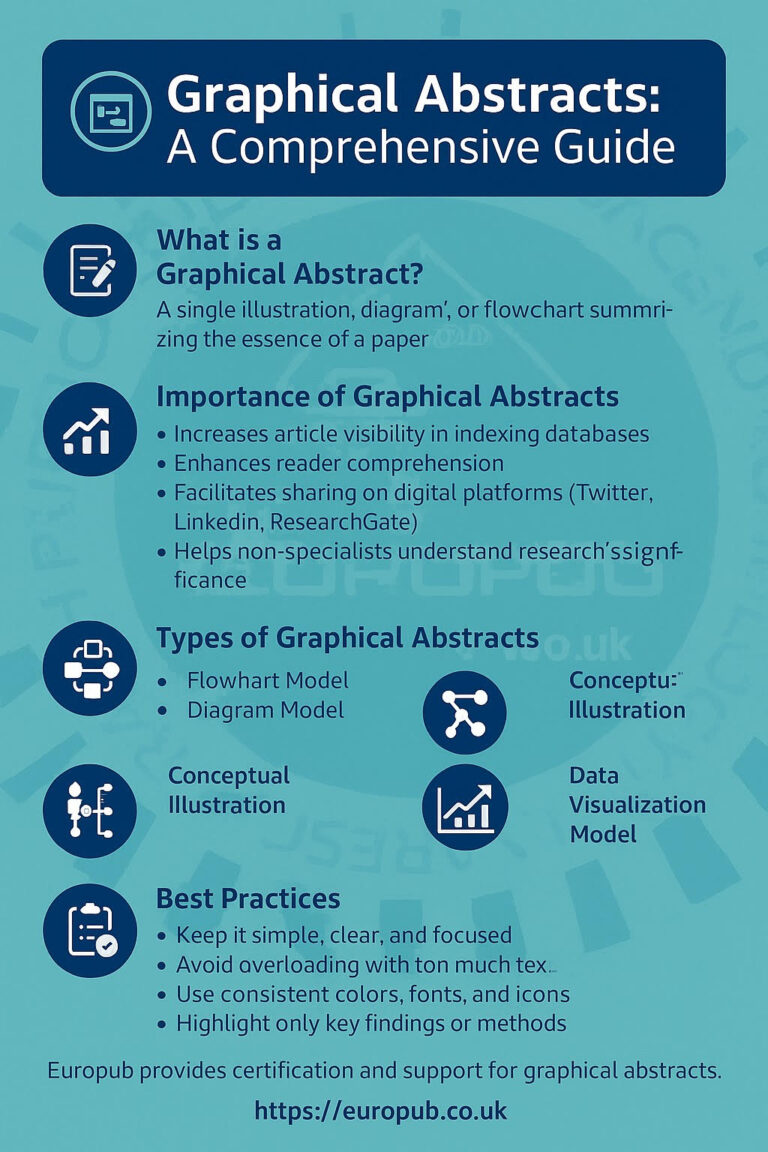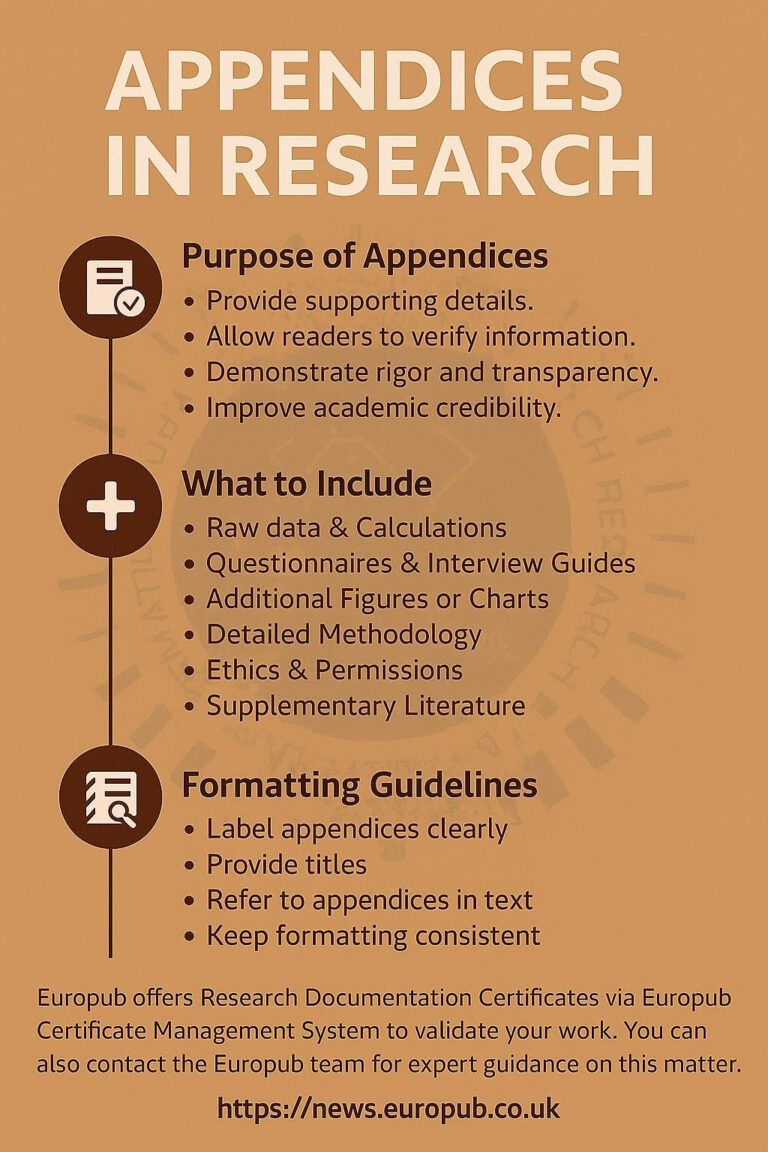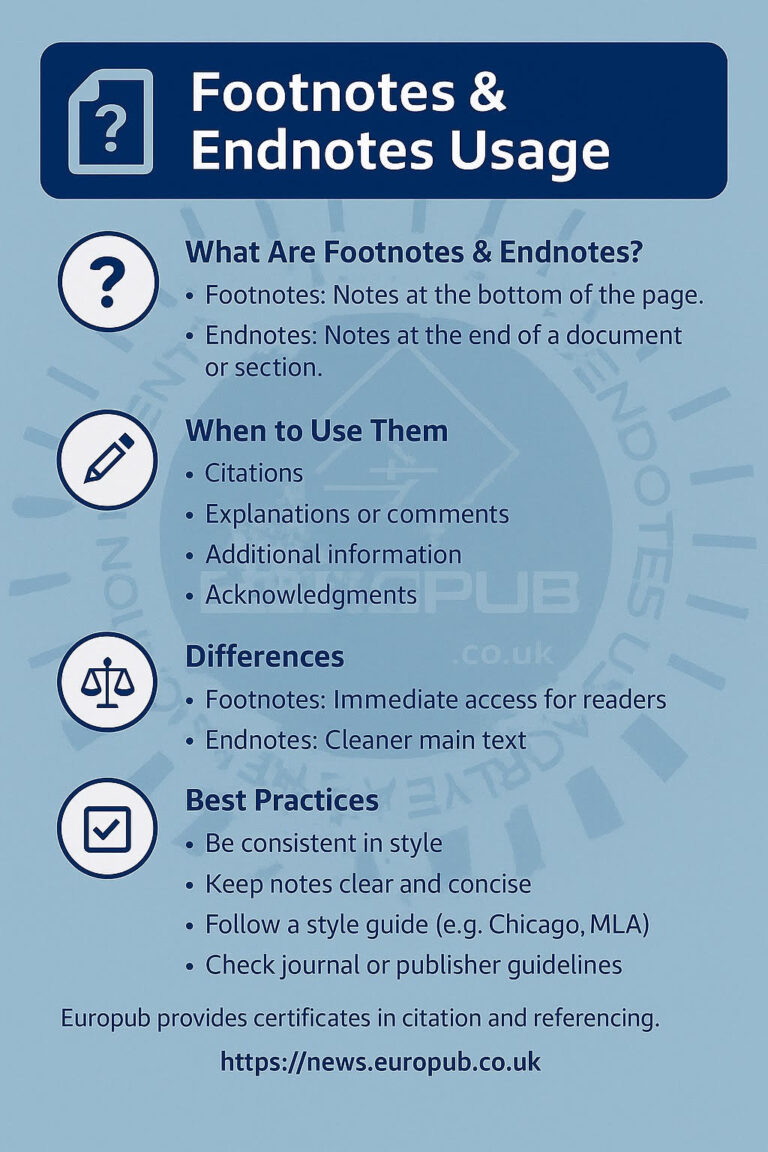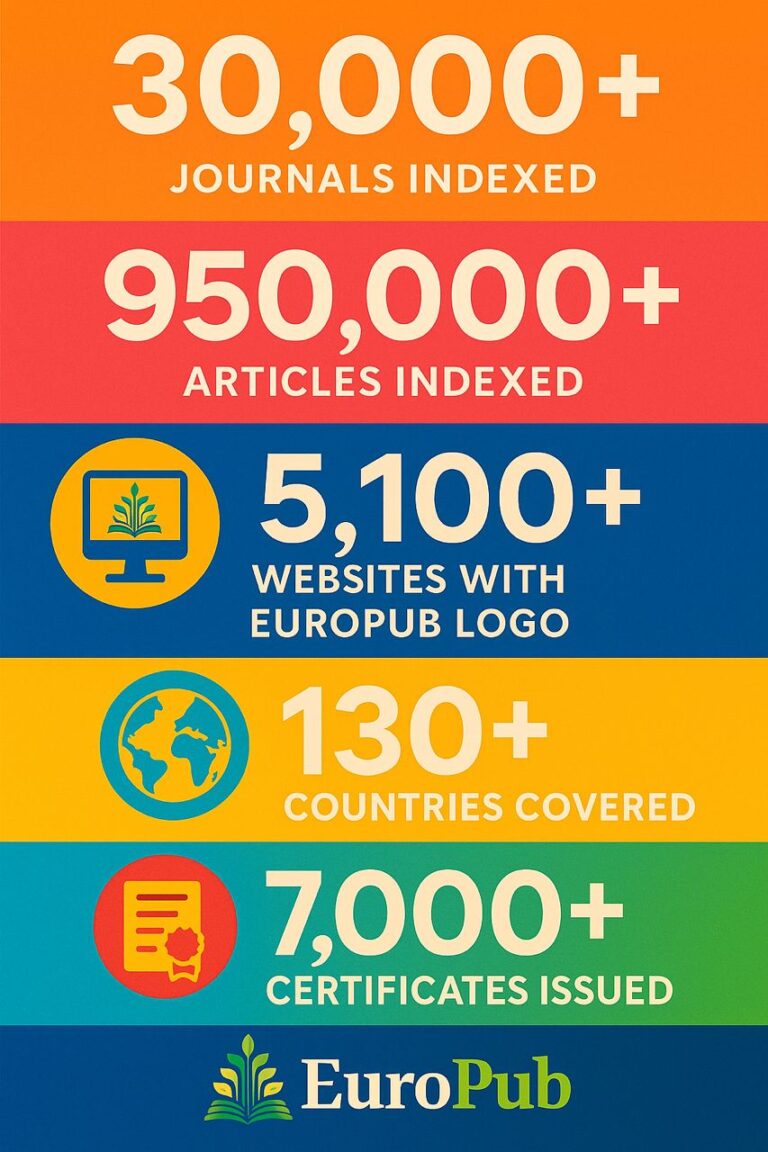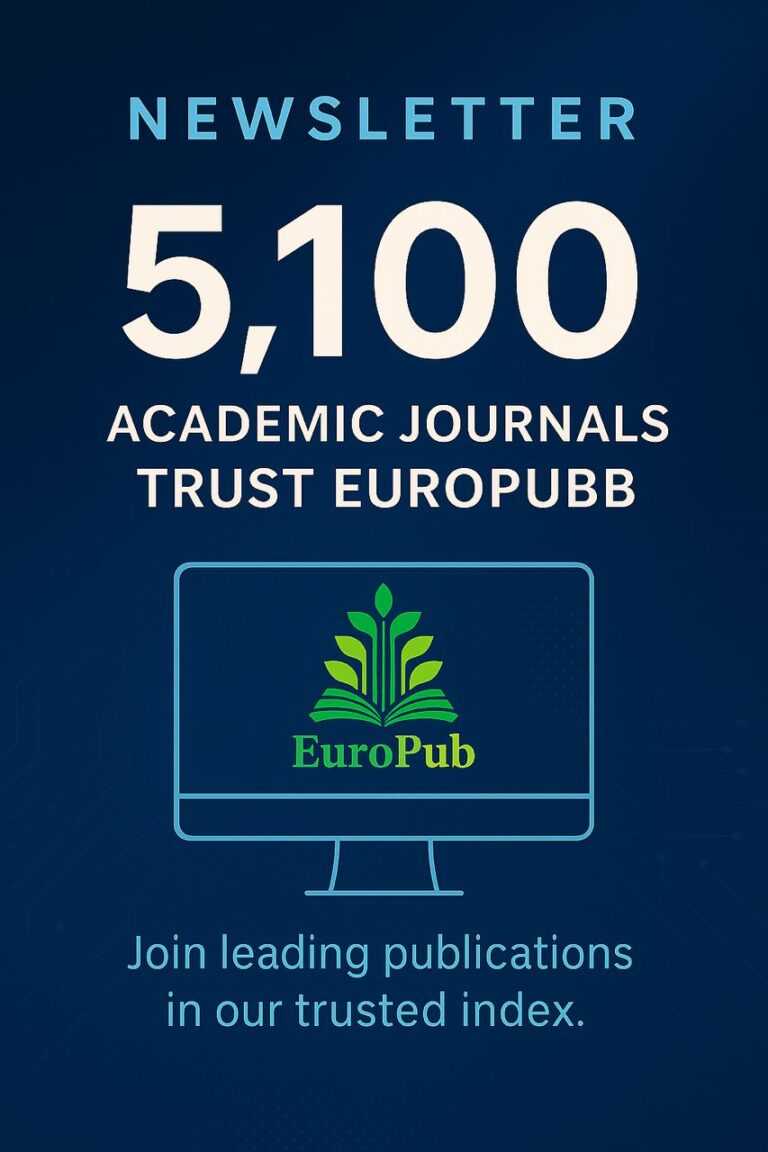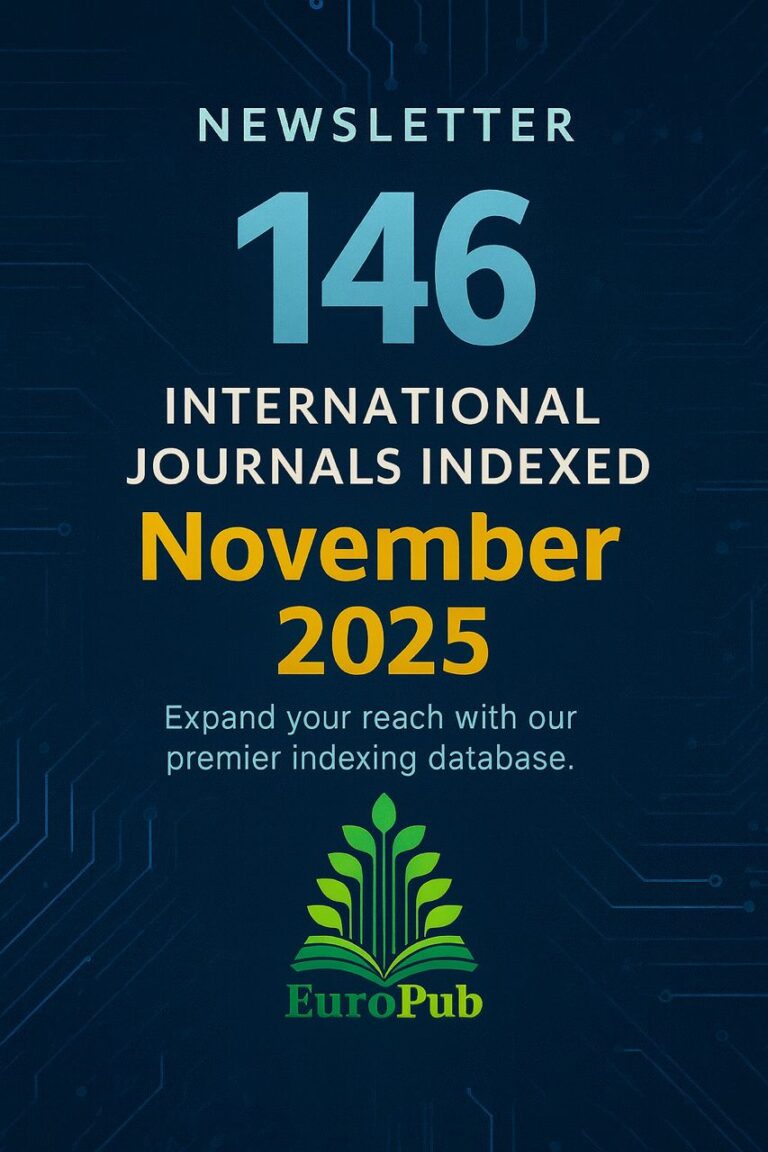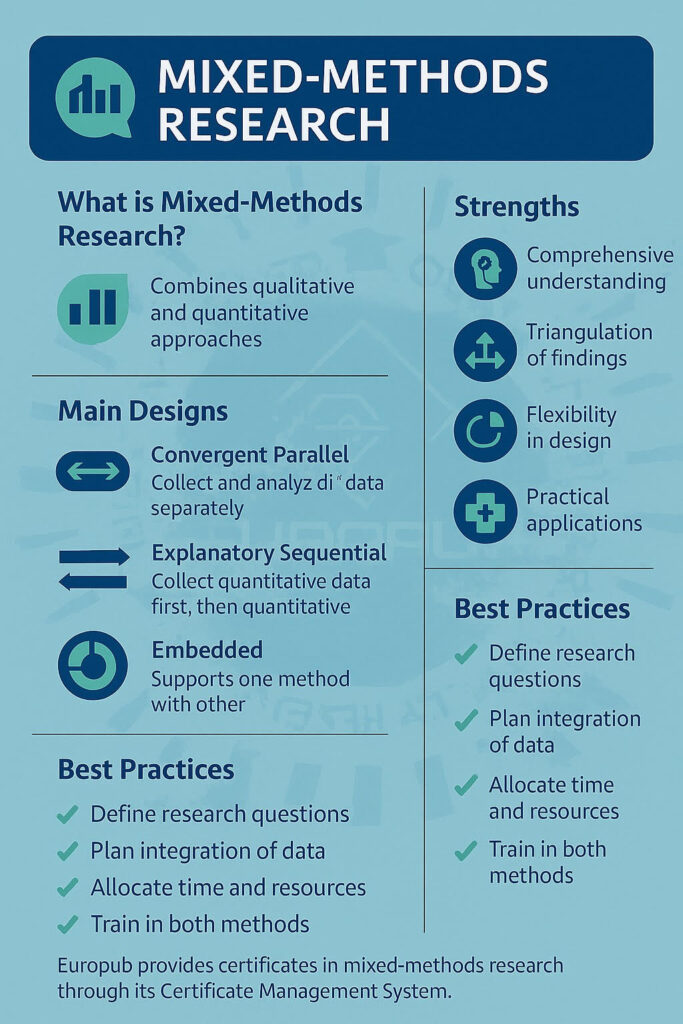
Introduction
Research problems are often too complex to be understood using only numbers or only words. Mixed-Methods Research (MMR) offers a solution by combining quantitative approaches (numerical data, statistics) with qualitative approaches (context, meaning, experience).
This integration gives researchers a holistic perspective, enabling them to explore not just “how much” or “how many,” but also “why” and “how.”
What is Mixed-Methods Research?
Mixed-Methods Research is an approach that systematically integrates quantitative and qualitative data collection, analysis, and interpretation in a single study.
- Quantitative side: Surveys, experiments, numerical analysis.
- Qualitative side: Interviews, focus groups, observations.
- Integration: Triangulation of results to provide deeper insights.
Why Mixed-Methods Research is Important
- Comprehensive Understanding
- Captures both breadth (numbers) and depth (meanings).
- Validation of Results
- Cross-verification (triangulation) strengthens reliability.
- Practical Relevance
- Useful for policy-making, education, healthcare, and social sciences.
- Flexibility
- Allows researchers to adapt methods based on the research question.
Main Designs of Mixed-Methods Research
1. Convergent Parallel Design
- Quantitative and qualitative data collected simultaneously.
- Both datasets analyzed separately, then merged.
- Example: Survey on teaching methods + interviews with teachers.
2. Explanatory Sequential Design
- First quantitative, then qualitative to explain results.
- Example: Survey on student performance followed by interviews to explore reasons behind trends.
3. Exploratory Sequential Design
- First qualitative, then quantitative to test findings.
- Example: Interviews to explore new teaching strategies → then survey to measure their effectiveness.
4. Embedded Design
- One method is primary, the other supports it.
- Example: A large-scale survey with a few focus group interviews embedded.
5. Multiphase Design
- Multiple studies over time, integrating both methods in phases.
- Example: Long-term evaluation of public health interventions.
Data Collection Techniques
- Quantitative: Surveys, experiments, structured observations, statistical datasets.
- Qualitative: Interviews, focus groups, open-ended questionnaires, ethnography.
- Integration Strategies:
- Joint displays (tables combining both data types).
- Triangulation matrices.
- Narrative integration.
Strengths of Mixed-Methods
- Provides richer, more nuanced findings.
- Addresses complex research questions.
- Balances numbers with lived experiences.
- Increases validity through cross-validation.
Limitations of Mixed-Methods
- Requires more time and resources.
- Data integration can be challenging.
- Needs strong expertise in both paradigms.
- Risk of superficial use of one method.
Real-Life Example
A public health study explored the impact of COVID-19 vaccination campaigns:
- Quantitative part: Large-scale surveys measured vaccination rates across demographics.
- Qualitative part: Focus groups explored reasons for vaccine hesitancy.
- Outcome: Policymakers received not just statistics but also insights into cultural barriers, improving campaign strategies.
Best Practices
 Clearly define why MMR is necessary.
Clearly define why MMR is necessary.
 Plan integration points in advance.
Plan integration points in advance.
 Allocate time and resources for both methods.
Allocate time and resources for both methods.
 Train research teams in both quantitative and qualitative analysis.
Train research teams in both quantitative and qualitative analysis.
 Report results transparently, showing how datasets complement each other.
Report results transparently, showing how datasets complement each other.
Resources for Learning
- SAGE Publications – Mixed Methods Research
- [Creswell & Plano Clark, “Designing and Conducting Mixed Methods Research”]
- Scribbr – Mixed Methods Guide
Europub Certification & Guidance
Europub provides Mixed-Methods Research Certification through its Certificate Management System:
 Certificate of Mixed-Methods Competency
Certificate of Mixed-Methods Competency
 Certificate of Quantitative + Qualitative Integration
Certificate of Quantitative + Qualitative Integration
 Certificate of Advanced Research Design
Certificate of Advanced Research Design
With certification, you can:
- Strengthen your journal submissions.
- Gain recognition for methodological expertise.
- Boost credibility in grant and project proposals.
 Apply here: https://cms.europub.co.uk
Apply here: https://cms.europub.co.uk
 Main site: https://europub.co.uk
Main site: https://europub.co.uk
 Newsletter: https://news.europub.co.uk
Newsletter: https://news.europub.co.uk
 You can also consult Europub’s expert team for hands-on guidance in designing and publishing mixed-methods studies.
You can also consult Europub’s expert team for hands-on guidance in designing and publishing mixed-methods studies.
Conclusion
Mixed-Methods Research bridges the gap between numbers and narratives. It empowers researchers to produce valid, practical, and deeply insightful findings that purely quantitative or qualitative methods cannot achieve alone.
With Europub’s certification and support, scholars can ensure that their MMR projects meet international standards and gain recognition across academia.
